Sicily, As Seen By Gregory Halpern
Sicily, As Seen By Gregory Halpern
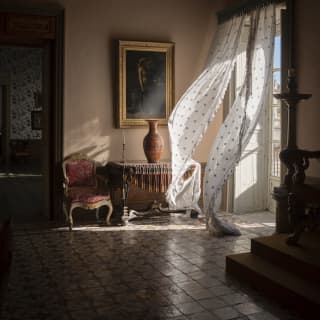
Sicily is a land of captivating contrasts. Here, we explore the island through the lens of Magnum photographer Gregory Halpern, delving into the enchanting destinations and exploring the mercurial Sicilian Soul.
The largest island in the Mediterranean, Sicily has ignited the imagination for millennia. A place where Hephaestus forged the metals for Olympus beneath the smouldering peak of Etna. Where Ulysses battled the Cyclops on rugged mountain slopes, where love turned pining mortals into rivers, and where the gates to the underworld may be hidden in verdant fields. A land where, somehow, none of these myths feels truly impossible.
I met Gregory Halpern in Catania airport. He’s a New York native, born in Buffalo, but holds a personal resonance with Sicily; his wife has Sicilian heritage, and they had previously spent some time exploring the island together. He’s an associate member of Magnum Photos, a teacher at the Rochester Institute of Technology, and has published six books of his work. His portfolio is vast and varied, but unified around a sense of authenticity; a fascination with colour, texture and detail to illuminate both stark social realities and moments of sublime oddity. His work is creation, not documentation.
Our odyssey begins in Taormina on the island’s northeast coast. It’s a postcard vision of Sicilian living, recently immortalised in season two of HBO’s The White Lotus, and home to the Grand Hotel Timeo, A Belmond Hotel. We enjoy some rich espressos on a panoramic terrace; a place with views that have charmed the likes of D.H. Lawrence, Tennessee Williams and Truman Capote. The hotel also has a very noteworthy neighbour; the Greek Theatre. The legacy of this site shines a light on some key parts of Sicilian history.
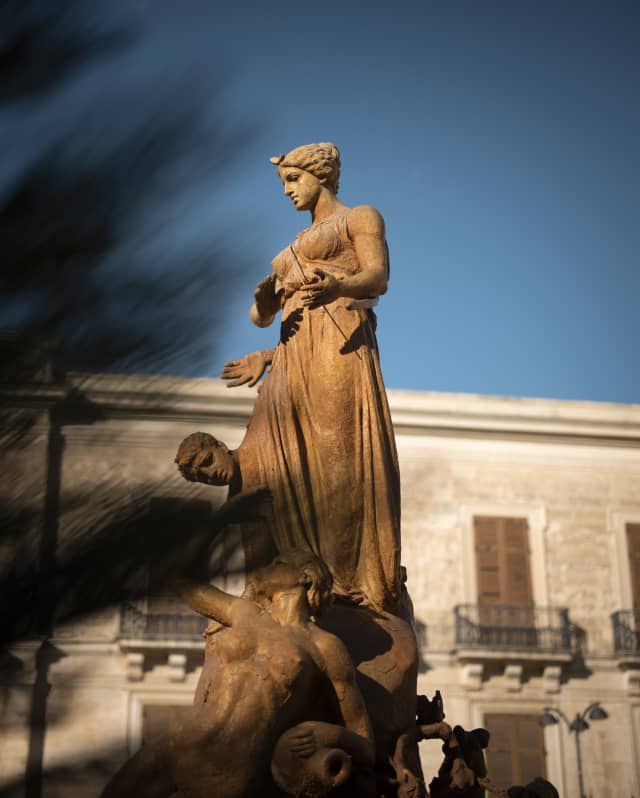
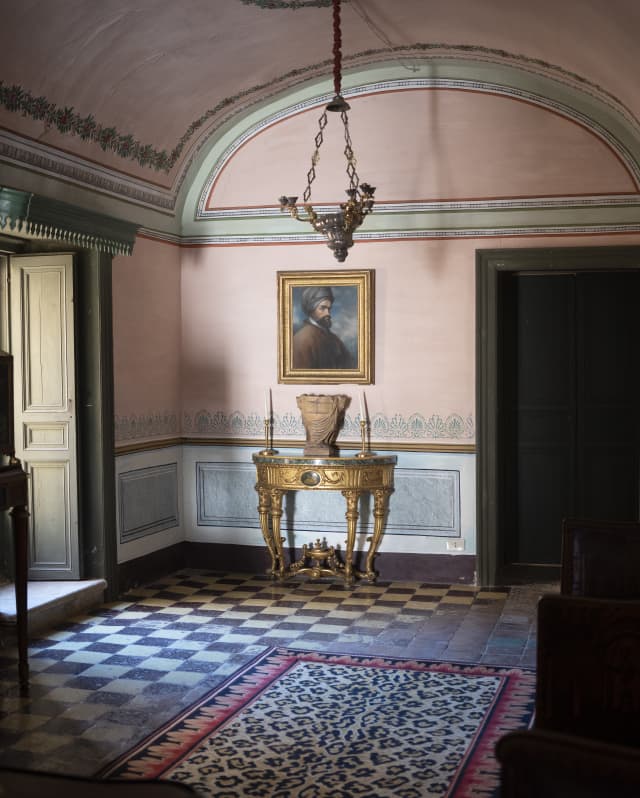
As the name implies, the theatre was originally Hellenistic, carved out from the mountain around the third century BC. The Greeks used theatre as a way of education; it was an art form of beauty, reflection and philosophy. The original design of the amphitheatre reflected this – the back of the stage was lower, exposing the view of the island coast winding up to Mount Etna. The natural scenery was an important part of the performances, adding to the sense of harmony and balance, while the sea breeze had a unique effect of pushing symphonic sound back towards the audience – the original surround system.
With Roman conquest, the theatre was expanded and built upon to become a more classical colosseum, equipped for hunting and fighting. The stage was now sealed in to shut out the view; no longer a place of art and intellectualism, but a place for entertainment and distraction. The idea that different cultures are visibly layered in this one space illuminates one of the key characteristics of Sicilian history; a legacy of invasion. From the Greeks and Romans, through Arabs, Berbers, Saracens and Normans, to the French, Spanish and now modern Italy, many people have all felt the allure of this enrapturing island and tried to claim it for themselves.
The remnants of these tidal cultural changes can be seen and felt everywhere. The east of the island retains much of its Greek feeling—interestingly, many natives didn’t gel with the Roman mindset, and the modern Sicilian language still contains a lot of Greek influences; an eccentricity among Italian destinations. The west of the island shows many remnants of the French and Arabic influence. But between the coasts, there’s a palpable open-mindedness; people here are exceptionally welcoming and open-hearted. No surprise, then, that the island was so popular amongst Europe’s (often homosexual) intellectual elite during the Grand Tours of the 17th and 18th centuries.
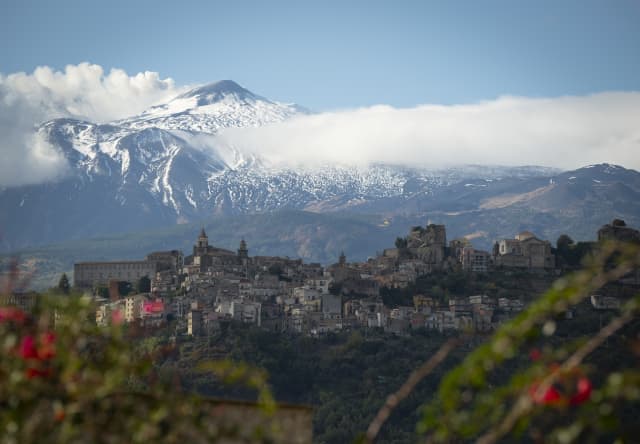
Our visit to Sicily continues to Etna, the majestic smoking figurehead that stars in almost every view. The drive highlights so much of Sicily’s natural beauty; the rolling forested hills that change with every turn, the shimmering coast carving into view as the road bends. Climbing the slopes of Etna, the most active volcano in the world, the scenery and weather change minute-to-minute. Constant small eruptions and lava flows mean the vegetation exists in generational bands – burnt and trees, bushes and flowers are in patches and forced to begin again in nutrient-rich soil.
Understandably, it is ripe for growing, rich in magnesium, iron, copper and phosphorous. Winemakers make the most of the exceptional conditions, growing white grapes like Carricante and Minnella on the eastern slopes and red grapes like Nerello Mascalese and Grenache on the northern slopes. The changes in altitude make it easy to find cool temperatures for ripening. Almost all growers stick to traditional, organic ways of growing, even if it can be more expensive and produce smaller batches. The quality, they feel, is more than worth the trade-off.
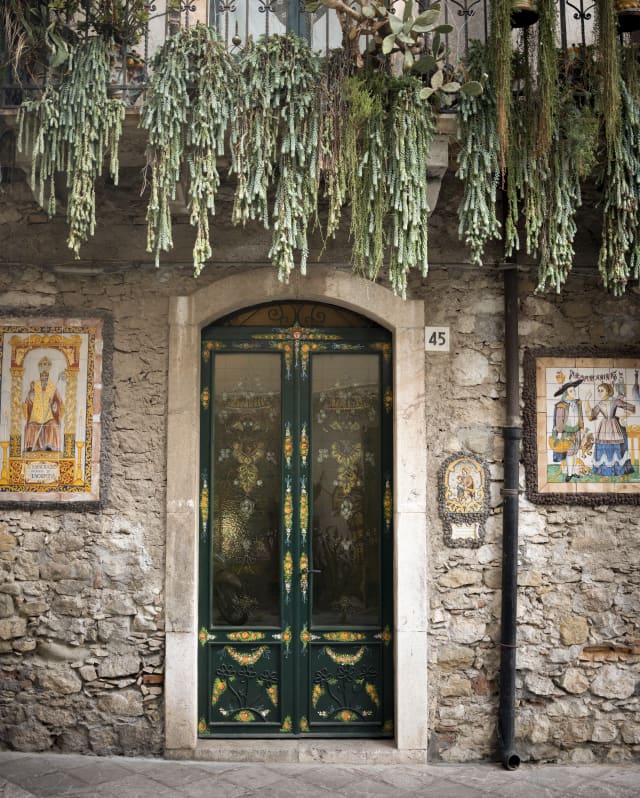
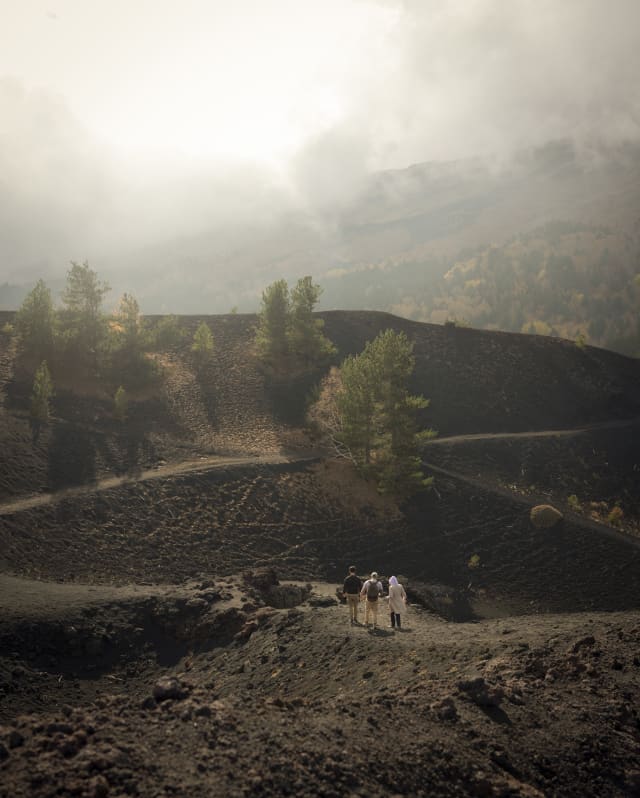
In the next two days we explore Ortigia and Noto. Here we find out more about Sicily’s artistic spirit – meeting creatives like Sergio Fiorentino; who draws on the island’s history of artisanship and religion to create stunningly engineered artworks of lapis blue, gold and silver; and exploring Palazzo Castelluccio; meticulously restored in a way that honours the patina and character of the original 18th century villa.
You’ll notice intentionally I’ve overlooked a key part of the Sicilian experience so far; the food. The food here is good—really good, mind-bogglingly good. The classics exist in a tier of their own perfection. The street sfincione is heavenly and packed with flavour; the granita is graceful and snow-soft. Younger generations are being imaginative with the staples (we eat delicious arancini infused with a red wine sauce at the base of Etna), but never straying too far from the tried and tested recipe. This is Italy after all. A place where we tend to stick to Nonna’s recipes because they are authentic and true and never fail to please.
Sicily operates on a language of food. Throughout our trip, every conversation bends towards flavour and almost every person we meet is eager for us to sample something that is important to them. Store owners come out with platters of candied fruit and nougat. Our guides and drivers rush to show us their favourite childhood sodas and invite us in on heated debates over where to find the best farsumagru on Sundays, with each conceding that nowhere is bad, but everyone else’s choice could be better. Food is a way to show love. I’m told that in most Italian cities, food is offered with the standard “prego”, or “please”. In Sicily, locals prefer to offer food with “piacere” – “my pleasure”, because the act of giving is always a treat in itself.
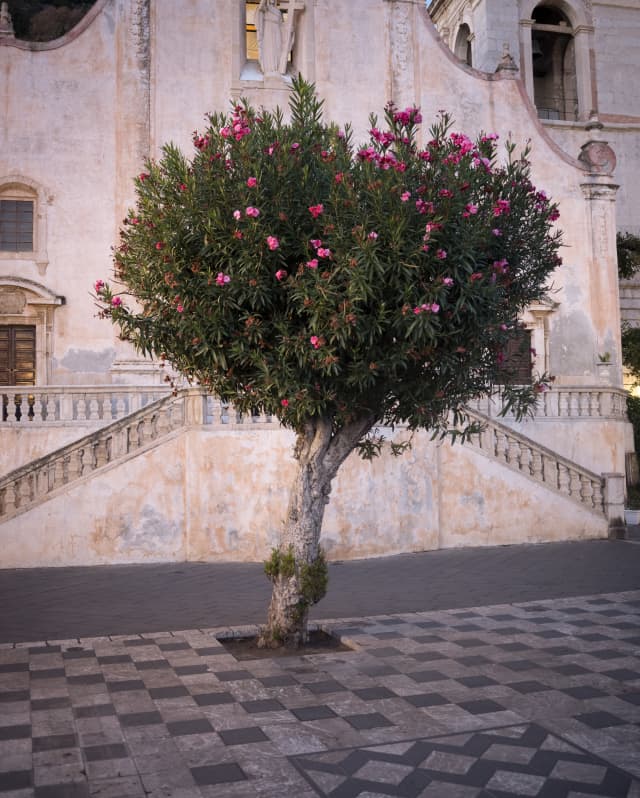
The final day with Gregory brings us to Agrigento, a city on the southern coast that was of key importance to the Greeks and Romans. The former of which still provides one of the city’s strongest present-day draws; the Valley of Temples, where visitors can find seven Greek Doric temples preserved in a now-listed UNESCO World Heritage Site. They are a breathtaking testament to the island’s history and enduring agelessness. Moreover, we explore the park of the archaeological site, cultivated with a variety of flora. Olive and almond trees, pistachios, myrtles, citrus fruits, figs, prickly pears and ornamental plants all glisten from the recent downpour. It feels like a point of genesis. Here, Sicily’s reputation for producing some of the best fruits and vegetables in Europe makes total sense. Even with the autumnal showers, the island proves itself a place of beauty for all seasons.
Our short immersion ending, Gregory has captured some enrapturing portraits of the island; snapshots into moments that convey the soul of Sicily. Fragments found in baroque facades and sepia-toned streets. In bowls of fruit that paint pictures of providence; in landscapes and horizons that have no choice but to ignite the imagination. And the question I’ve been swirling on all week; how do you define the Sicilian soul in words?
Sicily is an island of captivating contradictions. A slice of Italy more Greek than Roman. Where a history of invasion has seen cultures rise and fall. Where change is welcomed warmly, but only in small doses, because what’s already here has been tried and tested to perfection. Where everyone is friends until you’re behind the wheel of a car. Where rituals are important, but nothing is taken too seriously. Where simple things are enjoyed slowly and seductively.
Where it’s so easy to arrive and so difficult to leave. So difficult that, perhaps, you never really do.
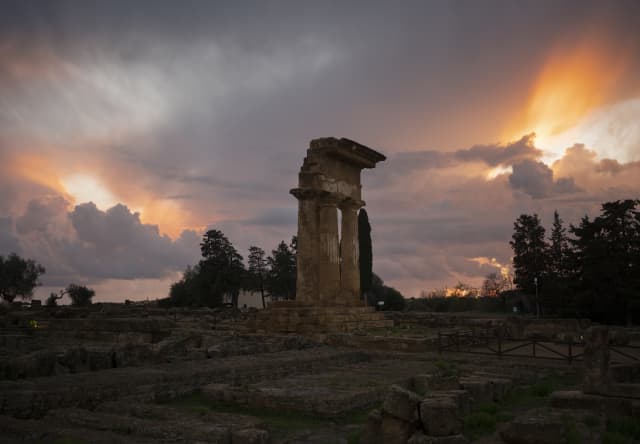
Delve deeper into
You might also enjoy
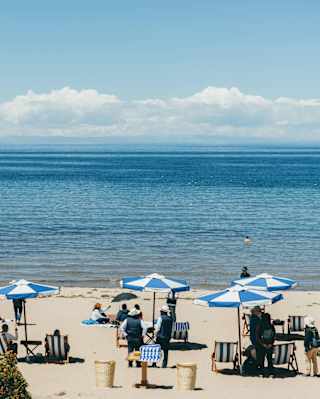
Hello From the World’s Highest Beach
Most beaches meet the sea, however, this one greets the sky. Stake your spot at Collata Beach on Lake Titicaca’s Taquile Island, where Belmond’s Andean Explorer is offering a rare trip to the shore at an altitude of nearly 4,000 metres.
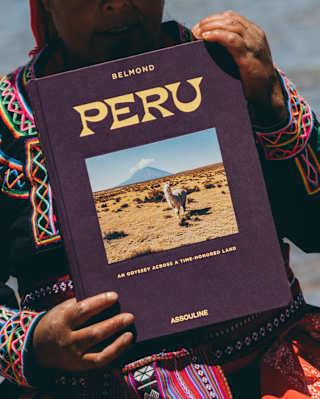
Peru: An Odyssey Across a Time-Honoured Land
In this extract from “Peru: An Odyssey Across a Time-Honoured Land,” a new book published by Assouline in collaboration with Belmond, journalist Catherine Contreras reveals a Peru travel guide, inviting readers to explore one of the planet’s most captivating destinations and showcasing the beauty of the locations where Belmond’s hotels and trains are found throughout Peru.
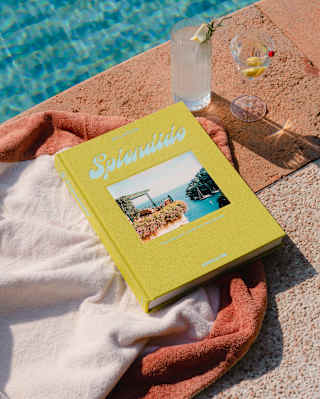
Splendido: The Radiant Stage of Portofino
For the new Belmond Assouline travel book, British journalist Matthew Bell dives into the history of Splendido to tell us the tales of the gem of the Italian Riviera. The hotel, which has entered a new chapter on the radiant stage of Portofino after a painstaking renovation, transforms into a mythical legend in the new Assouline travel book – discover an excerpt from the guide and read about the secret stories behind the iconic destination.
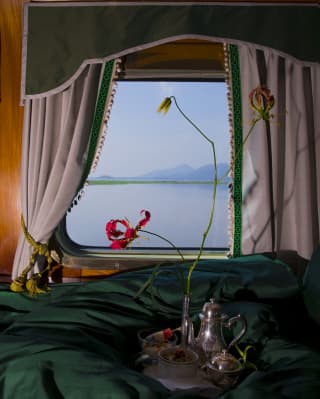
Go with the Slow: The Rise of Train Travel
Belmond continues to shape the future of luxury train travel, marked this year by the arrival of the Britannic Explorer, the first train of its kind in England and Wales. Monisha Rajesh – author of four travel books including ‘Moonlight Express: Around the World by Night Train’ – discovers why slow travel is having a resurgence.
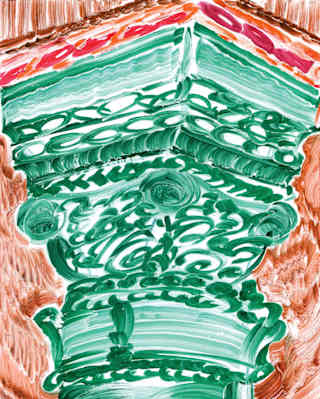
Quite the Site: Luxury Travel to UNESCO World Wonders
As proud custodians of historic properties near cultural and natural wonders, Belmond’s hotels and trains are the perfect choice for travellers with a historical hankering. Whether you’re marvelling at the ingenuity of the ancient Romans in Britain or the wonders of the Mayas in Mexico, our properties are your gateway to the past.
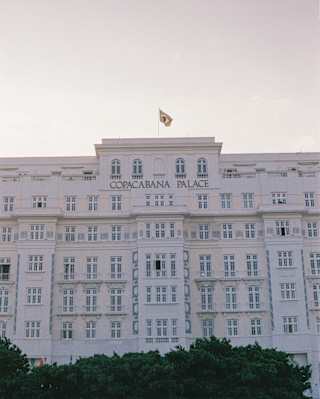
Belmond Legends: Copacabana Palace
Welcome to Copa, the legendary stage for the most glamorous encounters and iconic revellers. This is the place where Rio entertains and enchants. The place where Rio starts.
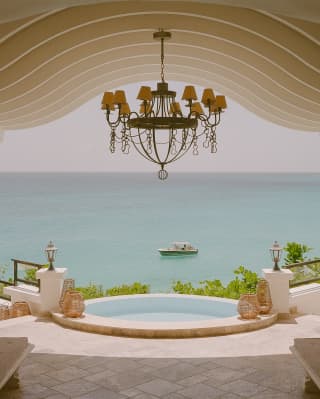
La Samanna: The Sanctuary of St. Martin
Perched above Baie Longue, La Samanna is a place where elegance and tranquillity mingle in perfect harmony. Step inside our legendary hotel, in the heart of Terres Basses.